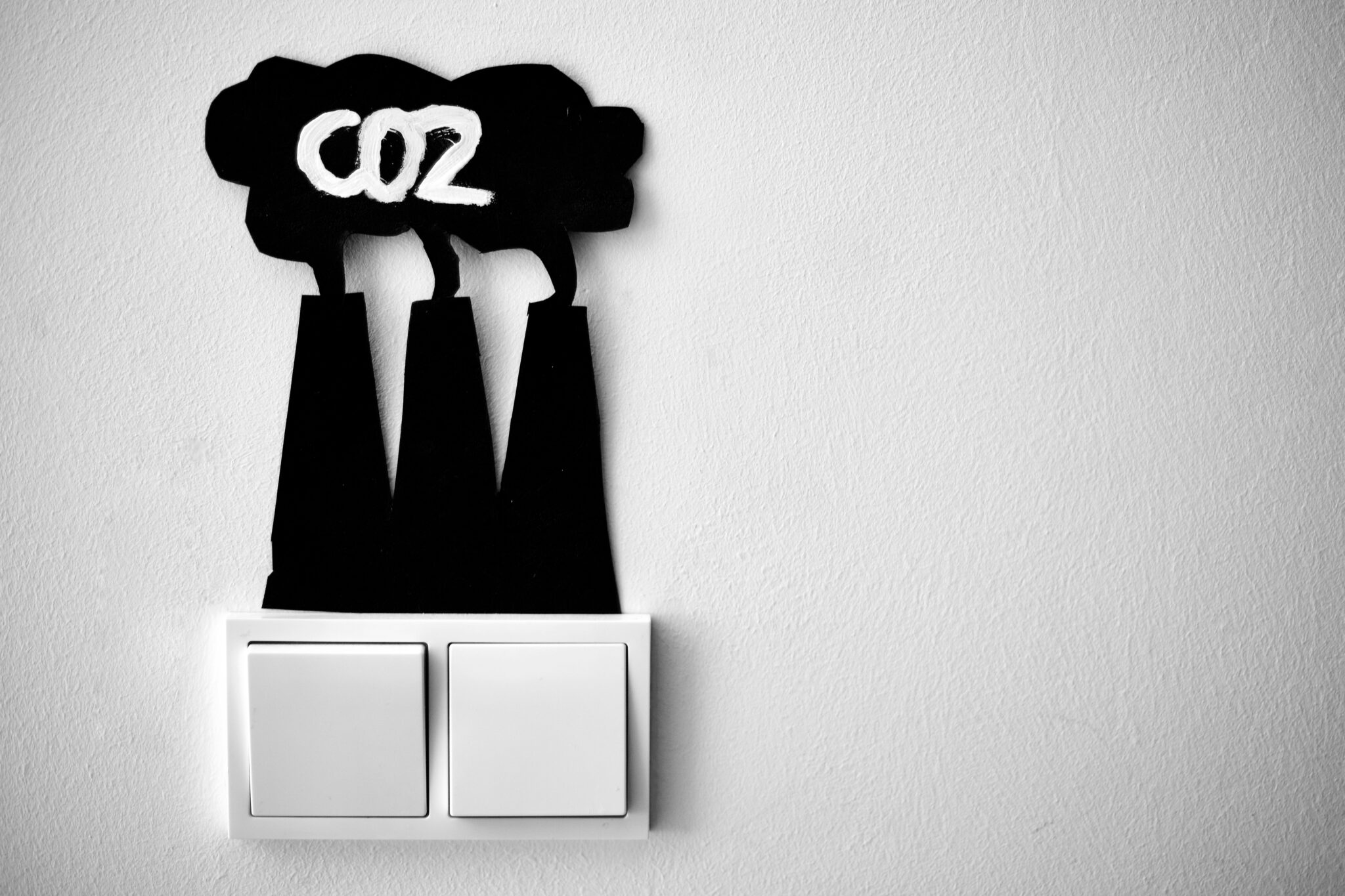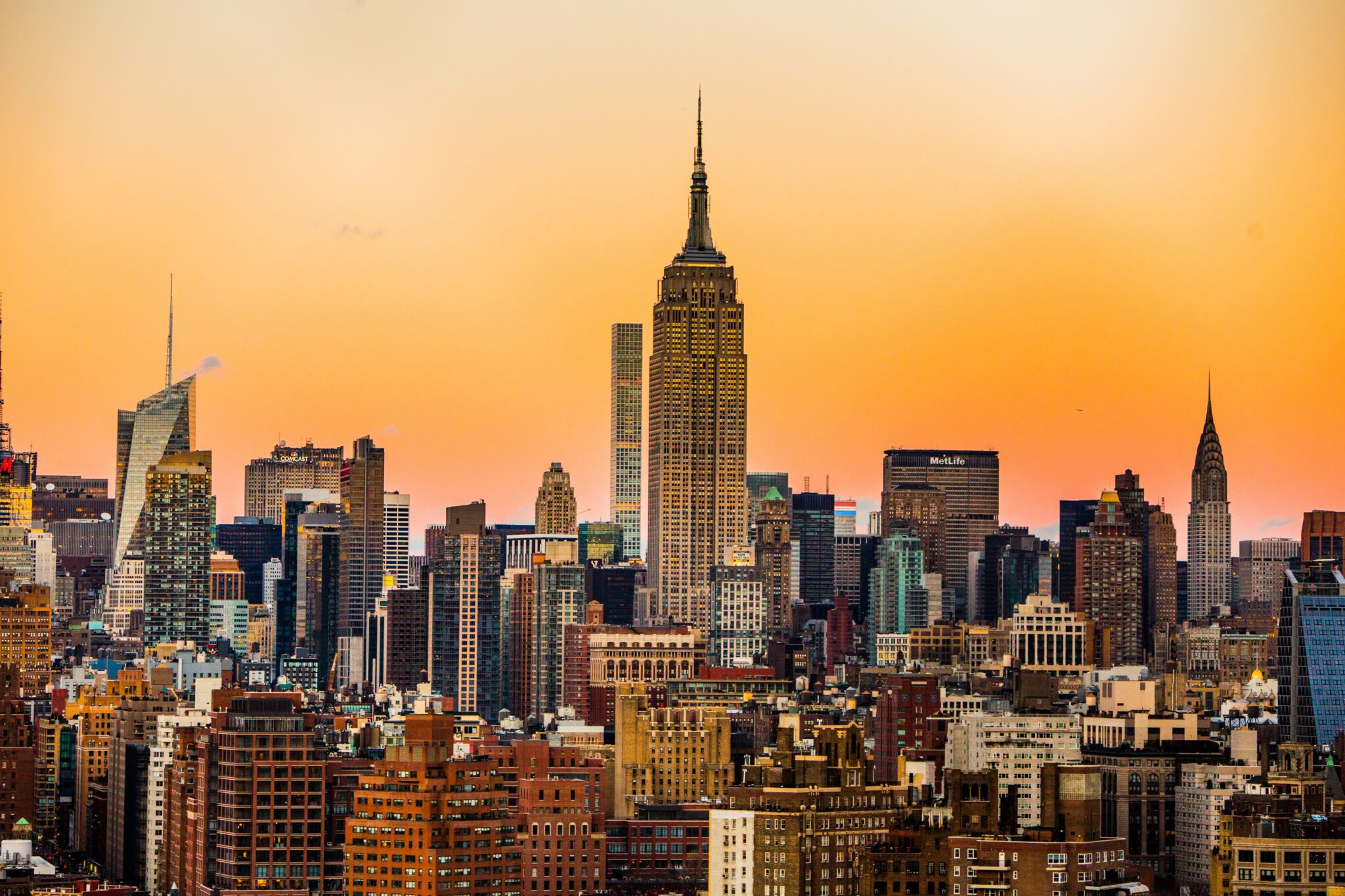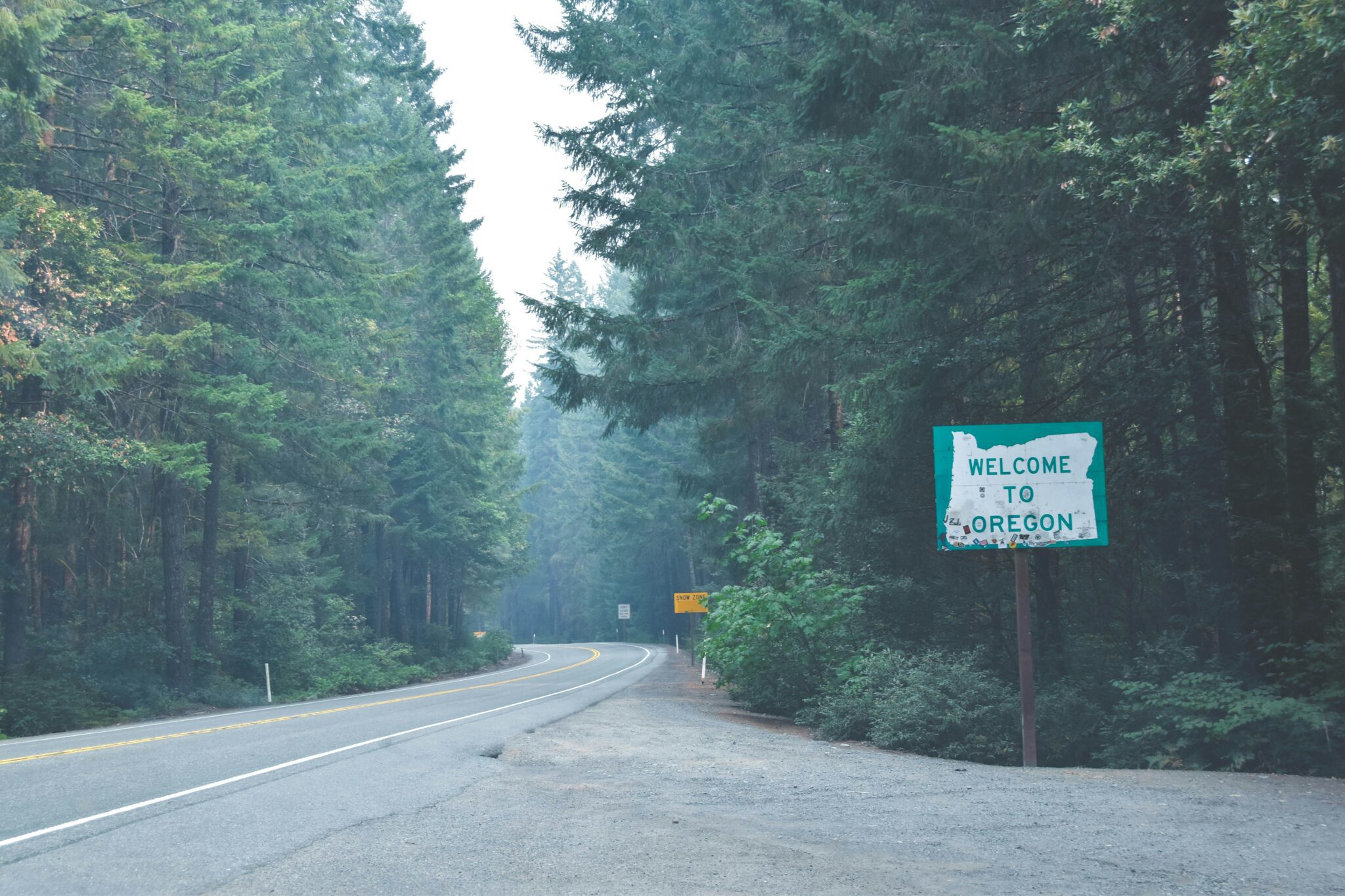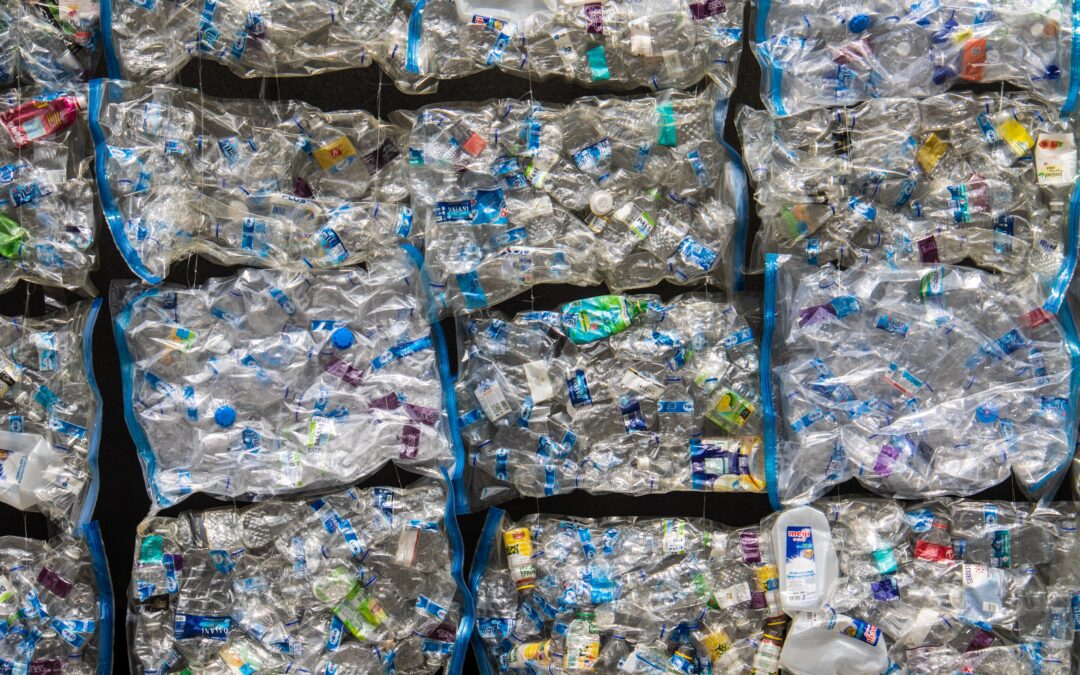Following analysis of the Verra registry and the Berkeley database, we found that the United States was the 2nd country with the largest number of carbon credit projects after China, and the 1st country in the world in terms of credits issued on the voluntary market. In contrast, the number of credits issued in Canada is only around 1.7% of the total issued in the USA.
The majority of US carbon credits come from three industrial sectors: Forestry and Land Use, Chemical Processes and Waste Management. In this article, we’ll take a look at Waste Management, one of Will Solutions’ focus areas.
Waste Management accounts for a total of 59,428,003 carbon credits in the United States, of which 54,916,542 come from methane capture and management projects at solid waste landfills. This type of project alone accounts for over 12% (6,589,985) of the total credits issued in the United States by the 75 projects in the Berkeley classification. In Canada, only 8,596 credits were issued for methane capture and management at engineered landfills. (UC Berkeley, 2023).
The purpose of this article is to compare the U.S. and Quebec legislative contexts, focusing on legal obligations relating to solid waste landfills. To this end, we will analyze U.S. federal laws and the state laws of two U.S. states, and compare them with Quebec laws and regulations. The Canadian federal legislative context will not be studied, as it does not provide a framework for TLS obligations. By revealing the differences in regulations between different geographical areas, we will attempt to demonstrate that geographical areas benefiting from less coercive regulations have an advantage in the development of abatement projects on the voluntary market. We will also attempt to demonstrate that more permissive laws harm the quality of reduction projects implemented.
The Berkeley database will be used to study in detail the types of waste management carbon credit projects present in the United States and Quebec. This database includes the four largest registries of international voluntary offset projects: American Carbon Registry (ACR), Climate Action Reserve (CAR), Gold Standard and Verra (VCS). (University of Berkeley, 2023)
Quebec Legislative Context
At the federal level, the Canadian government mainly complements provincial activities by controlling interprovincial and international movements of hazardous waste and hazardous recyclable materials. It is provincial legislation that governs the obligations associated with engineered landfills. (Government of Canada, 2022).
Environment Quality Act (Quebec)
In Quebec, the prevailing legislation is the Environment Quality Act (EQA). Several regulations stem from this law. In 2005, the Quebec government adopted the Regulation respecting the landfilling and incineration of residual materials (Légis Québec, 2024a).
This is an important regulation aimed at minimizing the impact of biogas (mainly methane) from Quebec’s technical landfill sites. Section 32 of the regulation obliges the largest landfills, i.e. those with a maximum capacity of over 1,500,000 m3 or which landfill more than 50,000 tonnes of residual materials per year, to capture biogas for reclamation or disposal. (Légis Québec, 2024a)
In 2021, there were a total of 38 technical landfill sites (TLS) in operation in Quebec, of which 21 were subject to the obligations of Section 32 of the Regulation respecting the landfilling and incineration of residual materials. More than 55% are required to have a capture and flare system, i.e. the majority of Quebec landfills. Between 2006 and 2012, the Quebec government even created the Biogas Program to financially support projects for the capture, elimination and reclamation of biogas from landfills not covered by the obligations set out in the Regulation respecting the landfilling and incineration of residual materials. (MELCCFP, 2012)
Cap-and-Trade System (Quebec)

Quebec also has its own regulated carbon market, the Cap-and-Trade Emissions Trading System (CETS). To encourage landfills not subject to Section 32 of the Regulation respecting the landfilling and incineration of residual materials to install a biogas capture and management system voluntarily, the Quebec government has established the Regulation respecting projects for the recovery and destruction of methane from landfills eligible for the issuance of offset credits (MELCCFP, 2024).
This regulation enables medium-sized landfills to voluntarily set up carbon credit projects for resale to large emitters on the Quebec-regulated carbon market. A single emissions register is kept by the Quebec government, and a quantification protocol under SPEDE regulations must be followed by project promoters to offer their carbon credits on the regulated market (MELCCFP, 2024). Some Quebec landfills, such as Rivière-Rouge, have implemented capture systems on a voluntary basis, without being subject to any regulatory obligations (MELCCFP, 2020a).
Since biogas capture at landfills is widely practiced and highly regulated, it can be considered standard practice in Quebec. The legislative context therefore prevents the capture and management of methane from landfills from being considered as a greenhouse gas (GHG) reduction project on the voluntary carbon market. Indeed, to be eligible for carbon credits, voluntary market projects must, among other things, go beyond current practices and legislation.
Upstream of waste disposal, Quebec laws and regulations provide a more detailed framework for selective collection and practices that could endanger the health of Quebecers and the integrity of ecosystems. The Regulation respecting the recovery and reclamation of products by enterprises also makes producers of 7 types of products (electronic products, batteries, mercury lamps, paints, etc.) responsible for setting up a recovery and reclamation system for their products (MELCCFP, 2023). Finally, the By-law for the development, implementation and financial support of a deposit system for certain containers assigns responsibility for developing, implementing and financing a modernized deposit system to producers who market “ready-to-drink” beverage containers from 100 millilitres to 2 litres (Légis Québec, 2024b).
In 2011, the Quebec government adopted the Quebec Residual Materials Management Policy and has since developed several action plans. The policy’s fundamental objective is that the only residual material eliminated in Quebec should be the ultimate residue. (MELCCFP, 2024c). It includes measures that could lead to legal or regulatory changes. It does not, however, present any regulatory obligations, but rather incentive and voluntary measures. Except for the obligations imposed by the aforementioned Quebec regulations, recycling, composting, reusing and reducing waste and diverting waste from landfill are not mandatory practices in Quebec.
The effectiveness of the policy and its action plans is criticized because Quebec’s performance since 2015 has regressed for almost all the targets set in it. In 2021, the amount of waste disposed of was 716 kg per capita, according to RECYC-QUÉBEC’s Bilan de la gestion des matières résiduelles. This represents a 3% increase over 2018 (RECYC-QUÉBEC, 2022). New GHG reduction projects in the Waste Management sector could therefore represent additional relevant efforts.
In Quebec, credits issued on the voluntary market within the Waste Management sector are illustrated in the following figure:

Figure 1 : Carbon credits from waste management on the voluntary market in Quebec (Université de Berkeley, 2023)
A single project issued 8,596 credits between 2010 and 2012 in the voluntary market. However, this project has not been active since 2012. (UC Berkeley, 2023) Indeed, as previously stated, the capture and management of biogas by flaring are considered common practice in Quebec.
Quebec’s legislative context therefore limits the freedom of GHG reduction project promoters on the voluntary market. Within the Waste Management sector, project promoters are obliged to propose projects upstream of landfill. This is the case for Solutions Will, which includes recycling and composting projects in Quebec as part of its Sustainable Community project. The credits for these projects are not reported in Figure 1, however, as the classification of multi-sector projects such as the Quebec Sustainable Community is incorrect in the Berkeley database.
Thus, the legislative context is encouraging Quebec project promoters to go further by proposing projects that divert waste from landfill and limit GHG emissions from landfills. The credits issued in Quebec will therefore be of superior quality.
U.S. Federal Legislative Context
Resource Conservation and Recovery Act (United States)
The Resource Conservation and Recovery Act (RCRA) is the legislative basis for federal waste management in the United States. The objectives of RCRA are to protect against the hazards associated with waste disposal, to conserve energy and natural resources through recycling and recovery, to destroy or dispose of waste, and to clean up waste that may have been improperly discharged. The Environmental Protection Agency (EPA) has the authority to enforce waste management laws. While the EPA establishes general guidelines for the disposal of hazardous waste, each state is responsible for implementing its own laws and regulations in line with federal obligations. The laws thus vary according to each state, which issues laws that are more or less stringent. (EPA, 2024)
Part 258 of the RCRA sets out the criteria to be followed for a landfill site in the United States. This part brings together site restrictions, design and operating standards, maintenance rules, etc. As far as biogas management is concerned, the law simply requires monitoring of methane concentration levels and the implementation of a remediation plan if methane concentration is too high and presents an explosion risk. The law does not require landfill operators to install a methane capture, disposal and recovery system (National Archives, 2024).
Clean Air Act and the Role of the EPA (United States)
Air emissions from landfill sites are regulated by the Clean Air Act (CAA). Existing regulations under the CAA require landfills of a certain size to install and operate a biogas capture and control system. Landfills are also required to report under the EPA’s Greenhouse Gas Reporting Program (GHGRP) if annual methane production is greater than or equal to 25,000 tonnes of carbon dioxide equivalent (MtCO2e). (BioSphere Plastic, n.a.)
In 2016, the EPA updated its performance standards within the CAA to reduce emissions from its municipal solid waste landfills. The agency requires certain US landfills to collect and monitor landfill gas. However, these obligations are primarily aimed at reducing landfill gas emissions, due to odor, potential health effects and safety concerns. Methane emissions are therefore not used to determine the obligation to collect and control gases. (BioSphere Plastic, n.a.)
The emission of non-methane volatile organic compounds (or NMVOCs) and the capacity in cubic meters of waste are the criteria used as a substitute for gas emissions (such as methane) to determine whether a collection system is required. Landfill sites concerned with the collection and control of biogas emissions are those that meet one of the following two criteria:
- The site’s waste capacity exceeds 2.5 million m3. (Federal Register, 2024)
- The site’s annual emission rate of NMVOCs is greater than or equal to 34 metric tons (Mt) (Federal Register, 2024).
The second criterion was changed in 2016 when the Clean Air Act updated its performance standards, from a threshold of 50 Mt to 34 Mt. However, an exception is made for sites closed before September 27, 2017. These are still subject to a threshold of 50 Mt of NMVOCs per year (EPA, 2017). Once collected, landfill gas must be flared or used to produce energy. (Federal Register, 2016)
The criteria imposed by the CAA are less coercive than those of the Quebec government. In fact, only U.S. landfills with a capacity exceeding 2.5 million m3 are subject to CAA obligations, compared with 1.5 million m3 in Quebec, a difference of 60% on this criterion. Nor do the United States consider annual tons of landfilled to be a relevant criterion. Instead, federal attention is focused on NMVOCs, which are a major contributor to local smog.
Upstream of landfills, there is no federal law requiring recycling or composting. However, the federal government is currently studying new legislation to gather data on U.S. recycling systems and explore the possibilities of implementing a national recycling and composting strategy. (US Composting Council, n.a.)
According to data from the Landfill Methane Outreach Program (LMOP), there are 1,239 municipal solid waste landfills with biogas collection systems among the 2,637 listed in their database. Over 53% of U.S. landfills are therefore not equipped with a collection system for the biogas they are responsible for emitting. (LMOP, 2024)

Figure 2 : Carbon credits from waste management in the voluntary market in the voluntary market in the United States (UC Berkeley, 2023).
At federal level, the legislative context is reflected in the development of numerous voluntary landfill gas capture and management projects: 170 in all. These projects emit a total of 54,916,542 carbon credits on the voluntary market. This represents over 92% of the Waste Management sector in terms of credits issued. The Berkeley database lists no recycling projects and only 824,165 composting credits, or just 1.3% of Waste Management projects in all US states. U.S. federal laws therefore do not encourage GHG reduction project developers to develop projects that divert waste from landfill. (University of Berkeley, 2023)
Federal laws apply to all 50 U.S. states, but these states are free to apply their own laws in addition to federal obligations. To compare the Quebec legislative context with the American one, it is then necessary to study the state laws that are specific to them. Let’s take the example of two American states: New York and Oregon.
New York State Legislative Context

Specific New York State Regulations
In New York State, the laws governing the installation of a biogas capture and management system are rather permissive. They simply incorporate the federal Clean Air Act requirements, without adding any more stringent obligations. Landfills exceeding a waste capacity of 2.5 million m3 and with an annual NMVOC emission rate greater than or equal to 34 Mt (50 Mt for sites closed before September 27, 2017) are therefore required to install a biogas capture and recovery system. (DEC, n.a.)
According to the LMOP database, there are a total of 86 landfill sites (open and closed) in New York State. Of these, 41 are equipped with a biogas capture and flare system, including 23 sites still in operation. More than half of all landfill sites are therefore not equipped with a biogas capture and flare system. Voluntary landfill gas capture and management projects are still active in this state (LMOP, 2024).
Upstream of landfill, New York State delegates to cities the responsibility of implementing a recycling program adapted to their needs. As in Quebec, the state also applies the principle of extended producer responsibility to 5 types of products (electronic equipment, batteries, mercury thermostats, etc.). (DEC, 2024) In addition, the state encourages recycling through the Returnable Container Act, which requires a deposit on glass, metal and plastic beverage containers of less than one gallon (DEC, 2022).
Finally, New York State is working to limit food waste from large companies and institutions. Indeed, the Food Donation and Food Scraps Recycling law, passed in 2022, requires companies and institutions generating an annual average of two tons or more of food waste per week to donate edible food and recycle the remaining food by-products (Westchester County, 2023). Although this law focuses only on a small portion of large New York organizations, it could have an impact in the years to come by further democratizing the practice of composting and developing the associated infrastructure. Smaller companies not subject to the obligations of this latest law could thus be at the origin of new composting projects on the voluntary carbon market.
The number of New York carbon credits generated by the Waste Management sector can be seen in the following figure:

Figure 3 : : Crédits carbone issus de la Gestion des déchets dans l’État de New-York (Université de Berkeley, 2023)
Au sein de l’État de New York, 6 projets de captage et gestion du méthane ont vu le jour entre 2003 et 2018 et ont été collectivement responsables de l’émission de 6 344 558 crédits carbone sur le marché volontaire. Il s’agit d’un nombre considérable de crédits, plaçant l’État de New-York en première place des états américains pour ce type de projet sur le marché volontaire. Cela représente environ 11,6% de l’ensemble des crédits issus des projets de captage et gestion du méthane aux États-Unis. (Université de Berkeley, 2023)
Cette part élevée de crédits émis peut notamment s’expliquer par un contexte législatif permissif. Cependant, malgré ce constat, on voit que la loi en vigueur a tout de même un impact sur les projets de réductions de GES. En effet, en 2016, la mise à jour des critères du Clean Air Act réduisait le plafond d’émission de COVNM de 50 Mt à 34 Mt pour les sites d’enfouissement en activité ou fermés après le 27 septembre 2017. (Federal Register, 2016) Cela s’est traduit par une nette baisse des crédits émis entre 2015 et 2016, passant de 565 142 à 92 352 crédits d’une année à l’autre. Aujourd’hui, 7 projets sur 10 ont un statut « complété » dans cet état, cela veut dire qu’ils ne sont plus éligibles à l’émission de crédits carbone sur le marché volontaire. (Université de Berkeley, 2023) Un lien est donc très probable entre le durcissement de la loi et la baisse du nombre de projets actifs sur le marché volontaire dans l’État de New York.
La loi n’est cependant pas venue à bout de l’ensemble des projets New Yorkais, en effet, les projets de captage et de gestion du méthane ont été responsables de l’émission de 272 163 crédits en 2021 et de 132 668 crédits en 2022.
Oregon Legislative Context

Legislative Initiatives in Oregon
Oregon’s legislative context differs from that of New York. Whereas New York is complying with federal obligations, Oregon is one of the few states in the U.S. to take the initiative in tightening its state laws to go beyond federal obligations. Oregon wants to target medium-sized sites, i.e. those with a capacity of between 200,000 and 2.5 million tonnes. The Oregon law adds another criterion to the federal law: methane emissions. Above a threshold of 664 tonnes of methane emitted annually, it requires the installation of a biogas collection and management system. The law also adopts measures for monitoring and controlling emissions from sites subject to the law’s requirements. (DEQ, 2021)
Biogas Management Systems in Oregon
According to the LMOP database, there are 24 landfills (open and closed) in Oregon. Only 11 of these sites are equipped with a biogas capture and management system, 9 of which are still in operation. Again, more than half the landfills in the state are not equipped with a biogas capture and flare system. This allows developers to pursue methane capture and management projects at landfills that are not subject to legal requirements. (LMOP,2024)
Recycling and composting programs
Upstream of landfill, the Opportunity to Recycle Act requires municipalities with more than 4,000 inhabitants to choose from one of 7 recycling programs (curbside recycling, multi-family recycling, mandatory commercial recycling program, etc.) and municipalities with more than 10,000 inhabitants to choose from one of 7 waste management prevention programs (residential waste prevention, commercial waste prevention, promotion of reuse and repair activities, etc.) (DEQ, 2022).
Some cities are also developing composting policies. This is the case of the City of Portland, which makes composting mandatory for businesses that throw away more than 250 pounds of food waste per week. (City of Portland, 2024) Recycling and composting obligations therefore depend on local regulations, not state laws. For the moment, no carbon credits from recycling and composting projects have been issued in Oregon, but the development of recycling and composting programs by cities can democratize these practices and develop infrastructures that will in future encourage the development of new projects on the voluntary carbon market.
The number of carbon credits issued by Oregon-based projects in the Waste Management sector can be seen in the following figure:

Figure 4 : Carbon credits from waste management on the voluntary market in Oregon (UC Berkeley, 2023)
In Oregon, a single project that is still active has issued a total of 140,722 carbon credits on the voluntary market between 2011 and 2022. With an average production of 11,726 credits per year, this is a small project. Although this project is still generating carbon credits to this day, the low number of credits issued in this state can be explained by laws that are more coercive than in the vast majority of American states. In-fact, medium-sized landfills in Oregon are subject to the obligations of the law and methane capture and management projects and are therefore not eligible to issue carbon credits on this type of site. (University of Berkeley, 2023)
Although Oregon is a model to follow in the United States, it is nevertheless relevant to compare it to Quebec. Indeed, in terms of the number of credits issued, Quebec credits represent only around 6% of the methane capture and management credits issued in Oregon. Yet Quebec has nearly twice the population of Oregon. This finding demonstrates once again that Quebec, which has stricter laws concerning its LETs, has issued considerably fewer credits on the voluntary market than U.S. states with more permissive laws.
Conclusion: Impact of Regulations on Carbon Credits and Waste Management
By studying the legislative contexts of Quebec, New York and Oregon, we can compare Quebec with a more permissive state and a more severe state in terms of their laws and regulations. We can also draw a link between the laws of the geographical areas studied and their respective emissions of carbon credits on the voluntary market. Areas with less coercive laws, such as New York State, emit significantly more credits because they are not restricted by law. On the other hand, areas with more coercive laws, such as Quebec, are at a disadvantage and are obliged to undertake GHG reduction projects that are not already regulated by law. These projects upstream of landfill optimize existing waste management systems.
These differences in regulations demonstrate a lack of fairness and uniformity between the different provinces/states, and therefore a variation in the quality of carbon credits issued depending on the geographical area studied. Indeed, Quebec credits will be issued for projects that divert waste from landfill. American credits, on the other hand, will focus more on methane capture and flaring once the waste has already been landfilled. The quality of carbon credits issued therefore varies considerably from one geographical area to another.
A comparison of New York State and Oregon reveals the impact caused by regulatory differences. It is important to remember, however, that the vast majority of American states, including New York, are content to apply federal requirements without adopting more coercive laws. This means that most of them have the same regulatory basis for biogas capture and management systems at solid waste landfills. However, in 2016, the performance criteria for solid waste landfills were tightened as part of the Clean Air Act update. In order to study the impact of legislation on the issuance of carbon credits in the United States, in a future article we will look at the impact of the 2016 update on the number of credits issued in the United States after its implementation.

Mathis Chanvillard
GHG Auditor
Author and Writer
References
- BioSphere Plastic. (n.a.). Federal Regulations on Methane Emissions from Landfills. https://biosphereplastic.com/landfill-gas-to-energy/federal-regulations-on-methane-emissions-from-landfills
- City of Portland. (2024). Business food scraps requirement. https://www.portland.gov/bps/garbage-recycling/business-garbage-policies/food-scraps-requirement
- Department of Environmental Conservation (DEC). (n.a.). Emission Guidelines for MSW Landfill Emissions. https://dec.ny.gov/environmental-protection/waste-management/solid-waste-management-facilities/landfill-types/emission-guidelines
- Department of Environmental Conservation (DEC). (2022). New York’s Bottle Bill. https://dec.ny.gov/environmental-protection/recycling-composting/bottle-bill#:~:text=New%20York’s%20Returnable%20Container%20Act,doesn’t%20contain%20sugar%20containers
- Department of Environmental Conservation (DEC). (2024). Product Stewardship & Extended Producer Responsibility. https://dec.ny.gov/environmental-protection/recycling-composting/product-stewardship-extended-producer-responsibility
- Oregon Department of Environmental Quality (DEQ). (2021). Landfill Gas Emissions Rulemaking. https://www.oregon.gov/deq/ghgp/pages/landfill-methane-emissions-reduction.aspx
- Oregon Department of Environmental Quality (DEQ). (2022). Opportunity to Recycle Act Fact Sheet. https://www.oregon.gov/deq/recycling/Documents/recOTRfs.pdf
- Environmental Protection Agency (EPA). (2017). LMOP Quick Reference Sheet: Regulations and Proposals Affecting Landfills and LFG Energy Projects. https://www.epa.gov/sites/default/files/2016-09/documents/lmopquickreference.pdf)
- Environmental Protection Agency (EPA). (2024). Resource Conservation and Recovery Act (RCRA) Overview. https://www.epa.gov/rcra/resource-conservation-and-recovery-act-rcra-overview
- Federal Register. (2016). Emission Guidelines and Compliance Times for Municipal Solid Waste Landfills https://www.federalregister.gov/documents/2016/08/29/2016-17700/emission-guidelines-and-compliance-times-for-municipal-solid-waste-landfills
- Federal Register. (2024). Federal Plan Requirements for Municipal Solid Waste Landfills That Commenced Construction on or Before July 17, 2014, and Have Not Been Modified or Reconstructed Since July 17, 2014. https://www.federalregister.gov/documents/2021/05/21/2021-10109/federal-plan-requirements-for-municipal-solid-waste-landfills-that-commenced-construction-on-or
- Government of Canada (2022). Municipal solid waste: a shared responsibility. https://www.canada.ca/fr/environnement-changement-climatique/services/gestion-reduction-dechets/solides-municipaux/responsabilite-partagee.html
- Légis Québec (2024a). Q-2, r. 19 – Regulation respecting the landfilling and incineration of residual materials https://www.legisquebec.gouv.qc.ca/fr/document/rc/Q-2,%20r.%2019
- Légis Québec (2024b). Q-2, r. 16.1 – Regulation respecting the development, implementation and financial support of a deposit-refund system for certain containers.. https://www.legisquebec.gouv.qc.ca/fr/document/rc/Q-2,%20r.%2019
- Landfill Methane Outreach Program (LMOP). (2024). Landfill Technical Data. https://www.epa.gov/lmop/landfill-technical-data
- Ministère de l’Environnement et de la Lutte contre les Changements Climatiques, de la Faune et des Parcs (MELCCFP). (2012). Biogaz Program. https://www.environnement.gouv.qc.ca/programmes/biogaz/index.htm#:~:text=Le%20R%C3%A8glement%20sur%20l’enfouissement,valoriser%20ou%20encore%20les%20%C3%A9liminer.
- Ministère de l’Environnement et de la Lutte contre les Changements Climatiques, de la Faune et des Parcs (MELCCFP). (2020a). Authorized landfills in operation. https://www.environnement.gouv.qc.ca/matieres/reglement/LET-autorise-exploitation.pdf
- Ministère de l’Environnement et de la Lutte contre les Changements Climatiques, de la Faune et des Parcs (MELCCFP). (2020b). Quebec Residual Materials Management Policy. https://www.environnement.gouv.qc.ca/matieres/pgmr/
- Ministère de l’Environnement et de la Lutte contre les Changements Climatiques, de la Faune et des Parcs (MELCCFP). (2023). Regulation respecting the recovery and reclamation of products by businesses. https://www.environnement.gouv.qc.ca/matieres/reglement/recup-valor-entrepr/index.htm
- Ministère de l’Environnement et de la Lutte contre les Changements Climatiques, de la Faune et des Parcs (MELCCFP). (2024). Register of offset projects. https://www.environnement.gouv.qc.ca/changements/carbone/credits-compensatoires/registre_creditscompensatoires.htm#le019
- National Archives. (2024). Part 258 – Criteria for municipal solid waste landfills. https://www.ecfr.gov/current/title-40/chapter-I/subchapter-I/part-258
- RECYC-QUEBEC. (2022). L’élimination. https://www.recyc-quebec.gouv.qc.ca/sites/default/files/documents/bilan-gmr-2021-elimination.pdf
- University of Berkeley. (2023). Voluntary Registry Offsets Database (V10). https://gspp.berkeley.edu/research-and-impact/centers/cepp/projects/berkeley-carbon-trading-project/offsets-database
- US Composting Counsil. (n.a.). Federal Recycling and Composting Accountability Act. https://www.epw.senate.gov/public/index.cfm/2024/3/senate-passes-recycling-composting-legislation-led-by-capito-carper-boozman#:~:text=RECYCLING%20AND%20COMPOSTING%20ACCOUNTABILITY%20ACT,-The%20Recycling%20and&text=The%20legislation%20would%20require%20EPA,and%20at%20the%20state%20level.
- Westchester County. (2023). NYS Food Donation and Food Scraps Recycling Law. https://environment.westchestergov.com/nys-food-donation-and-food-scraps-recycling-law

